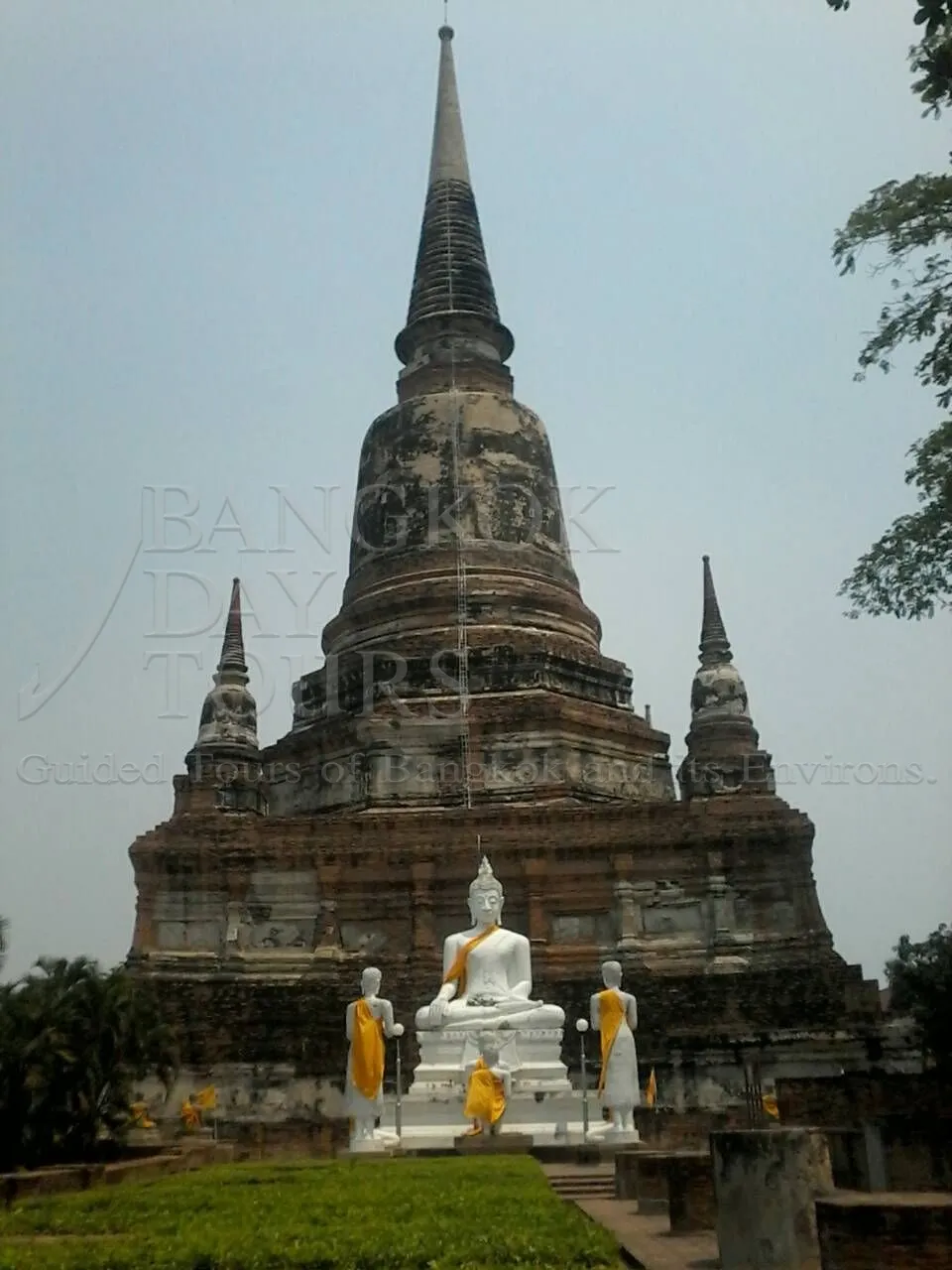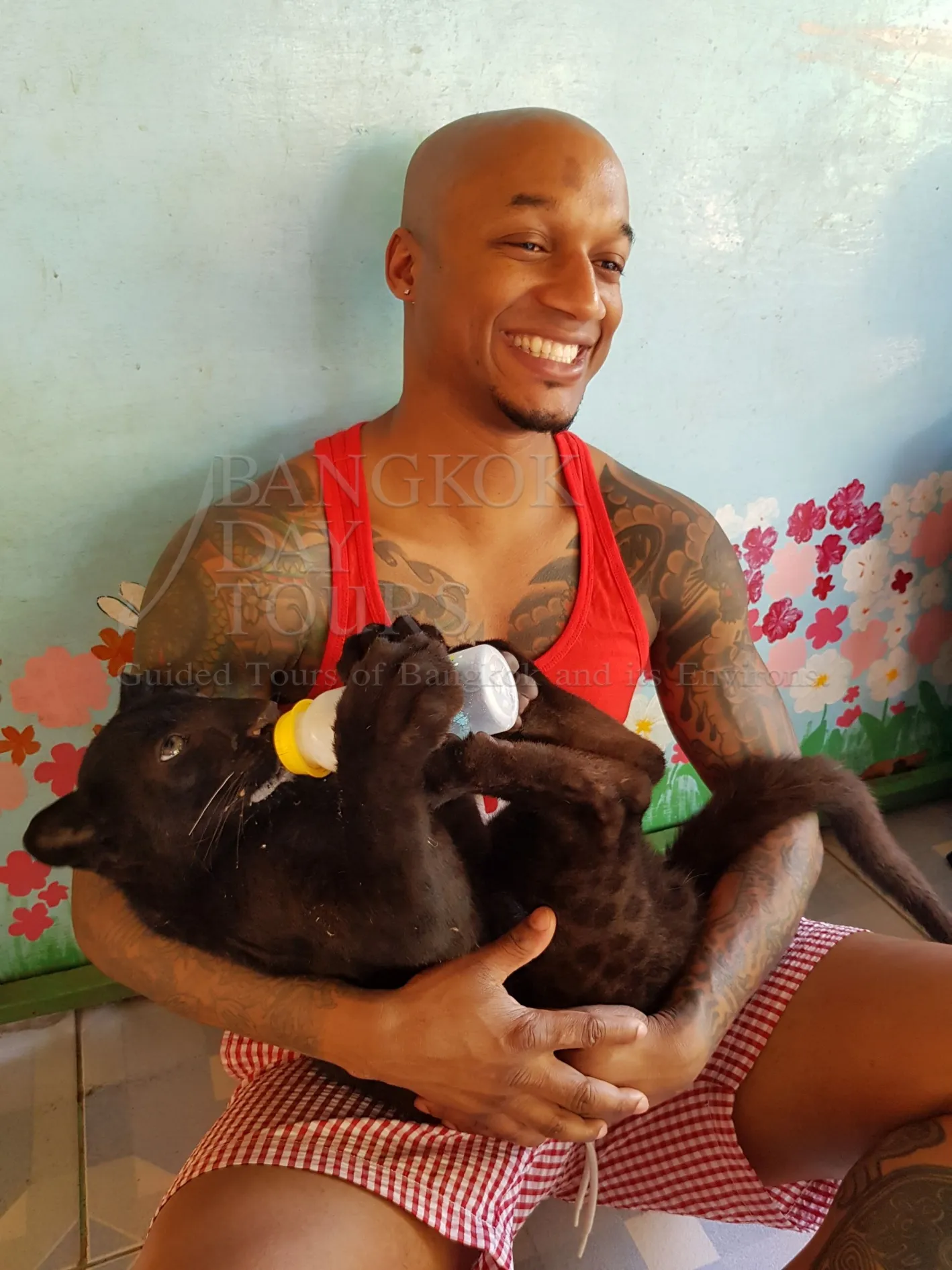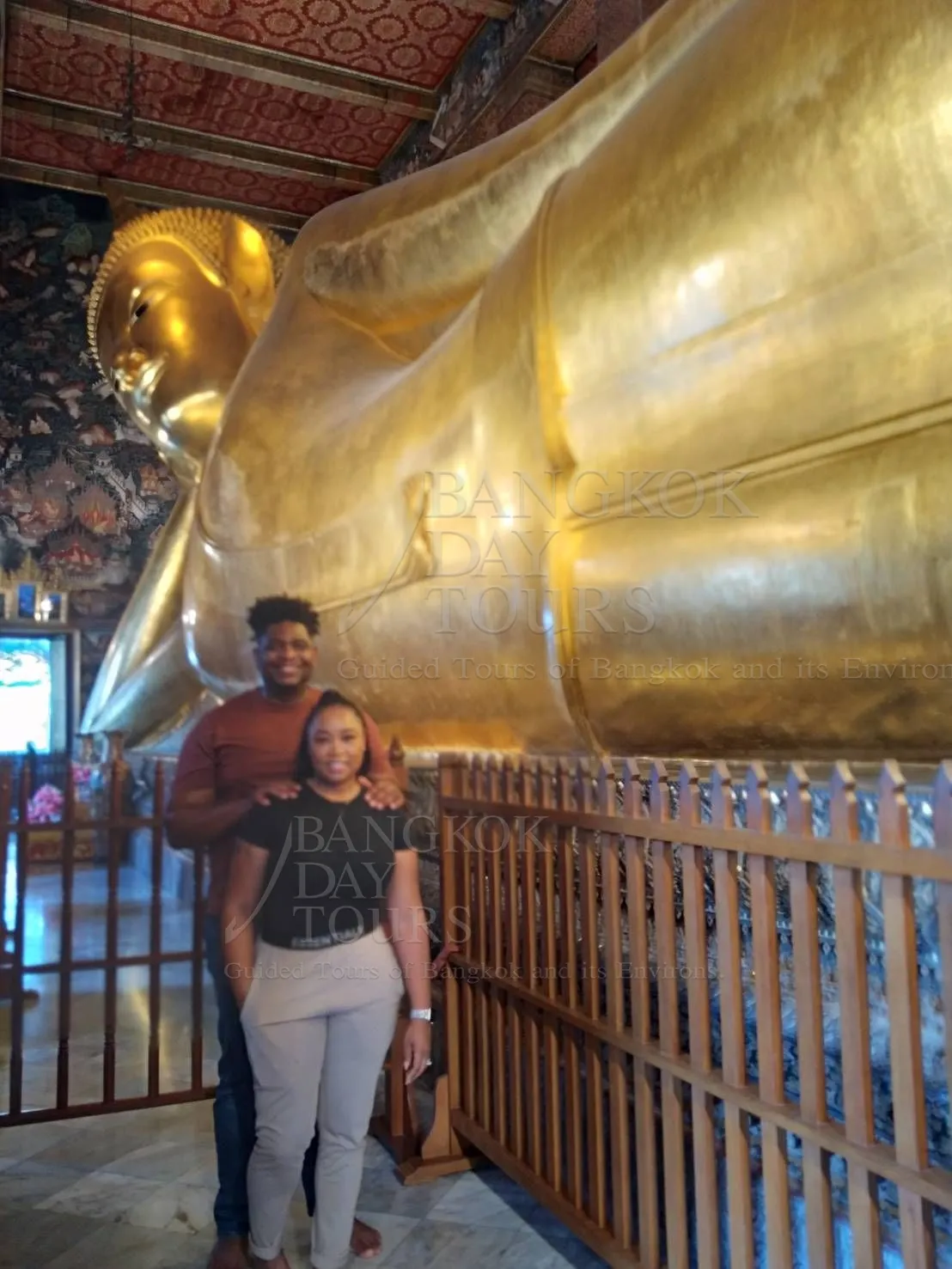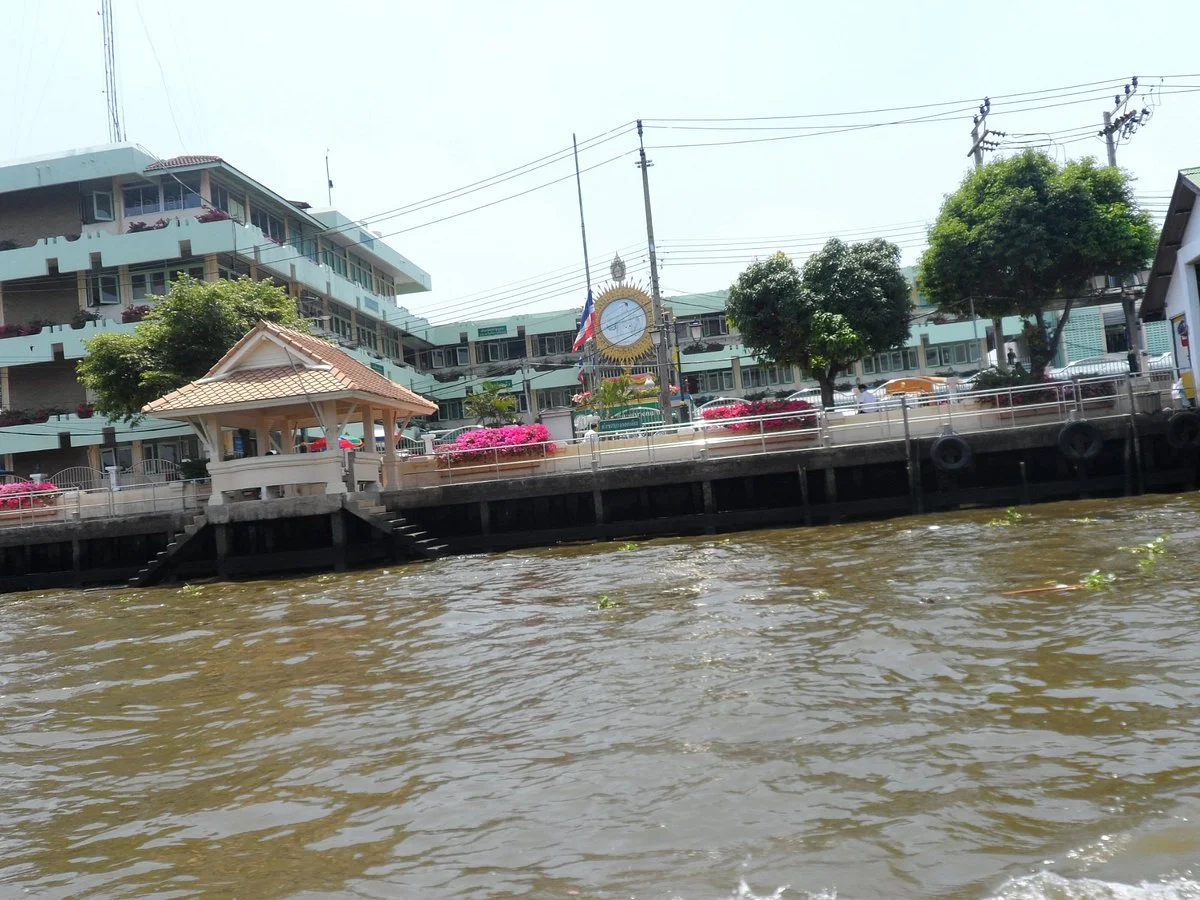
Attractions information
Klong Toey Port
Klong Toey Port is where the smaller cruise ships dock when they visit Bangkok. The port is 26 kilometers up the Chao Phraya River and is right in the heart of Bangkok city.
It's commonly known as Bangkok Port and was Thailand's only major port for sea transportation of cargo from 1938 until 1991.
The construction of Klong Toey Port began in 1938 and finished after the end of World War II.
The port is located on the Chao Phraya River not far from Gulf of Thailand. Due to its limited capacity and traffic problems caused by semi-trailer trucks, much of the shipping operation has been moved to the new container terminal at Laem Chabang in Chon Buri Province.
In the past Klong Toey was the major night entertainment area for the whole city of Bangkok. It had its heyday in the 1960's and 1970's dying out almost completely in the 1980's when the Bangkok Port Authority claimed the land that was home to the majority of the night entertainment venues.
The whole area is a bit tatty and grubby, like any port, but the positive side for the cruise ships docking here is that they are right in the centre of Bangkok and are not subjected to the two-hour drive from Laem Chabang.
Cruise ships using Klong Toey Port during the 2009-2010 season include Azamara Quest, Seabourn Odyssey, Seabourn Pride & Oceania Nautica.

Attractions information
Floating Market Damnoen Saduak
Waterways have always been an integral part of Thai life and many communities depended entirely on them for their daily existence.
Long before cars, boats of all shapes and sizes plied the rivers and canals through the kingdom of Thailand, trading their wares and delivering their supplies.
The Floating Market at Damnoen Saduak is located in Ratchaburi Province which is just over 100 kms or two hours drive from the capital city of Bangkok.
This is a particularly fertile area, being irrigated by a 32 kilometre straight-line canal constructed by King Rama IV way back in 1866.
It connects the Taachin River with the Mae Klong River and became a major transport artery between the provinces of Samut Sakorn and Samut Songkram.
Apart from providing transportation, Damnoen Saduak Canal also provides year-round water, with more than 200 small canals having been dug by farmers to irrigate their land.
The area is famous for the quality of its fruit, namely grapes, mangoes, bananas, oranges, papaya & coconut.
Nowadays, both sides of the canal are densely populated and bright and early every morning vendors from the surrounding area turn up to trade their wares.

Attractions information
Bridge over the River Kwai
The Bridge over the River Kwai was built during World War II for the Japanese Army using Allied POWs.
Altogether, 61,700 British, American, Australian, Dutch and New Zealand soldiers and a large number of Chinese, Vietnamese, Japanese, Malaysian, Thai, Burmese and Indian labourers were involved.
Two bridges were actually built side by side. A wooden trestle bridge, which is no longer there, was completed in February 1943 and an eleven span steel bridge completed in April 1943.
This bridge had been dismantled by the Japanese and brought to Kanchanaburi from Java in 1942. The central spans were destroyed by Allied bombings and rebuilt by British Army Engineers immediately after the war.
It was part of the strategic railway linking Thailand with Burma. During the construction of the bridge over the Khwae Yai River - River Kwai as it is known among foreigners - the brutalities of war, disease and starvation claimed thousands of POWs lives.
The bridge was immortalised in the book by Pierre Boulle entitled The Bridge Over The River Kwai and later in the movie of the same name. Unfortunately, he had never been to Kanchanaburi or he would have known that the railway does not cross the River Kwai. It actually crosses the Mae Klong River, so the Thai authorities simply renamed the river to aid tourism!

Attractions information
Kanchanaburi Province
Kanchanaburi Province which borders Myanmar (Burma) to the north-west is the third largest Thailand's of seventy six provinces.
It is located 130 km west of Bangkok and has a population of about 735,000 of which 54,000 live in Kanchanaburi town itself. This is a most picturesque part of Thailand.
Kanchanaburi town was originally established by King Rama I as a first line of defence against the Burmese, who might use the old invasion route through the Three Pagodas Pass on the Thai-Burma border.
The magnificent landscape & charming beauty of Kanchanaburi have resulted in major tourist attractions including the well-known Erawan Waterfalls, caves which were once inhabited by Neolithic man, pristine national parks, tranquil rivers, virgin forests, and reservoir.
Together, they offer an intriguing experience whether you are visiting for the first-time or returning for another visit.
Whatever your personal interest: fishing, rafting, canoeing, mountain biking, bird-watching, star-gazing, golfing, elephants, tigers, jungle trekking or even living on bamboo rafts, Kanchanaburi takes pride in offering them all.
Local residents of Kanchanaburi are engaged in agricultural activities as this is one of the most fertile provinces. Most of the locals are of Thai ancestry with notable Mon and Karen minorities.
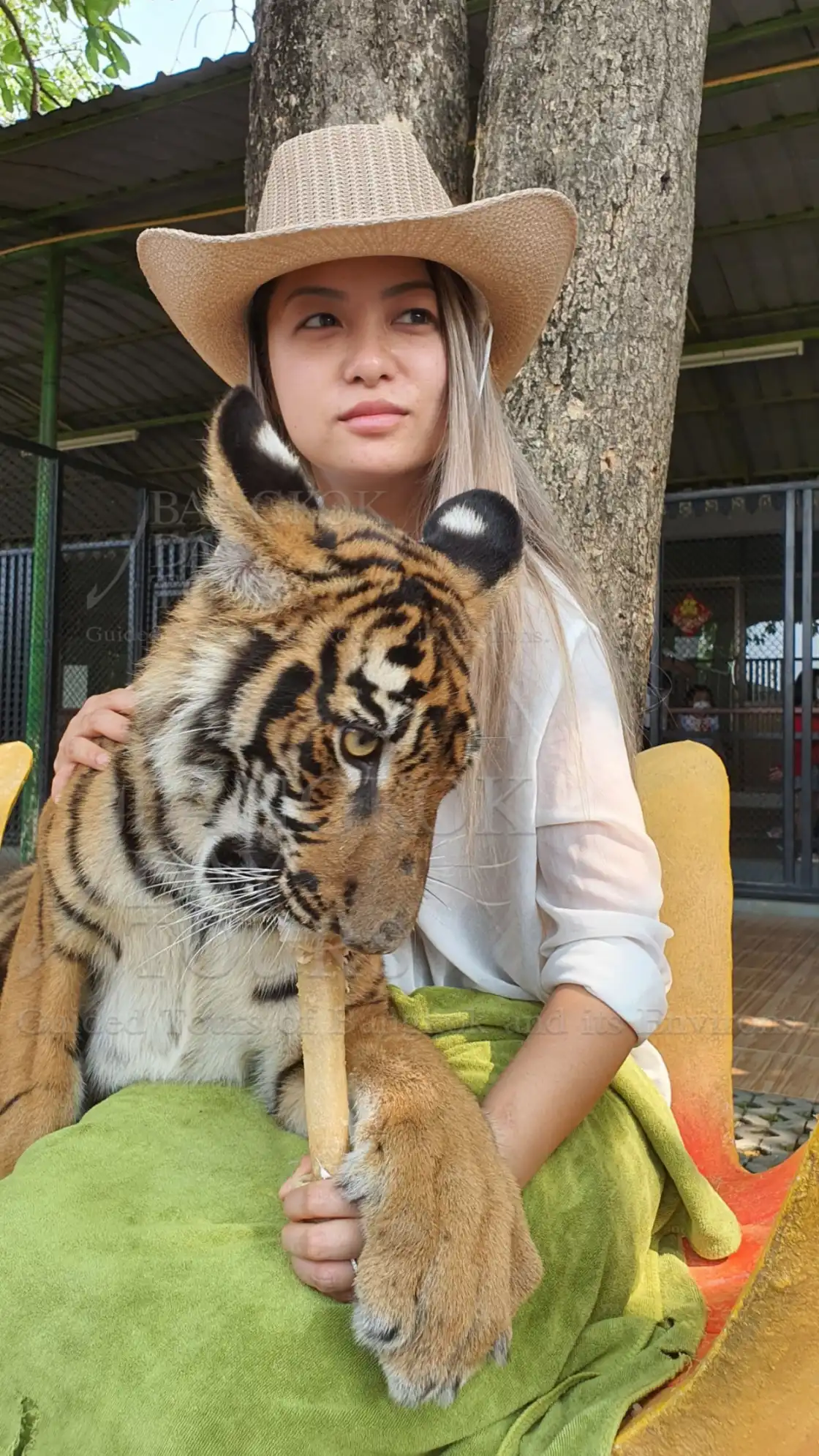
Attractions information
Tiger Temple Classic Afternoon
In Kanchanaburi Province there is a forest temple, founded in 1994, which has become a sanctuary for numerous wild animals including many tigers.
While it is more commonly known as The Tiger Temple, its Thai name is Wat Pha Luang Ta Bua Yannasampanno.
The abbot, Phra Acharn Phusit, has been caring for abandoned tigers since 1999. The mother of the first cub he took in had been killed by poachers. The first tiger cub died from its injuries, but a few weeks later two more tiger cubs were rescued from poachers and brought to the temple.
Word soon spread and more abandoned or injured tigers were brought to the temple. By 2005 there were 17 tigers at the temple. Seven were orphans rescued from the wild and ten have been born and bred here at the temple.
The monastery is situated adjacent to Burma. Protected areas and national parks along the Thai-Burma border are believed to contain the largest surviving populations of tigers in Thailand.
Unfortunately, while these areas are protected, poaching still occurs. A poacher can earn several years of a farmer's salary for killing a tiger, so the profit is well worth the risk. After the mother tiger is killed the cubs are taken as a bonus, or left to fend for themselves in the jungle and if found are left here.

Attractions information
Wat Mahathat Ayutthaya
Wat Mahathat was built in the early days of Ayutthaya in the late 14th century by King Borommaracha I.
The story goes that the king had a revelation, and relics of the Buddha then suddenly appeared. The temple was built to house the relics.
Wat Mahathat Ayutthaya was built in the early period in 1374. The main stupa is Pang shape made of laterite but in the later periods was resored with brick.
The construction of Wat Mahathat was begun during the reign of King Borommarachathirat I in 1374 A.D. but was completed during the reign of King Ramesuan (1388-1395 A.D.) When King Songtham (1610-1628 A.D.) was in power the main prang (Khmerstyle tower) collapsed. The restoration work on the prang was probably completed in the reign of King Prasatthong (1630-1655 A.D.) During the restoration the height of the prang was considerably increased.
Wat Mahathat was restored once again during the reign of King Borommakot (1732-1758 A.D.) when four porticos of the main prang were added. In 1767 A.D. when Ayutthaya was sacked the wat was burnt and has since then been in ruins.
It is most famous for the Buddha head trapped in the Bodhi Tree.
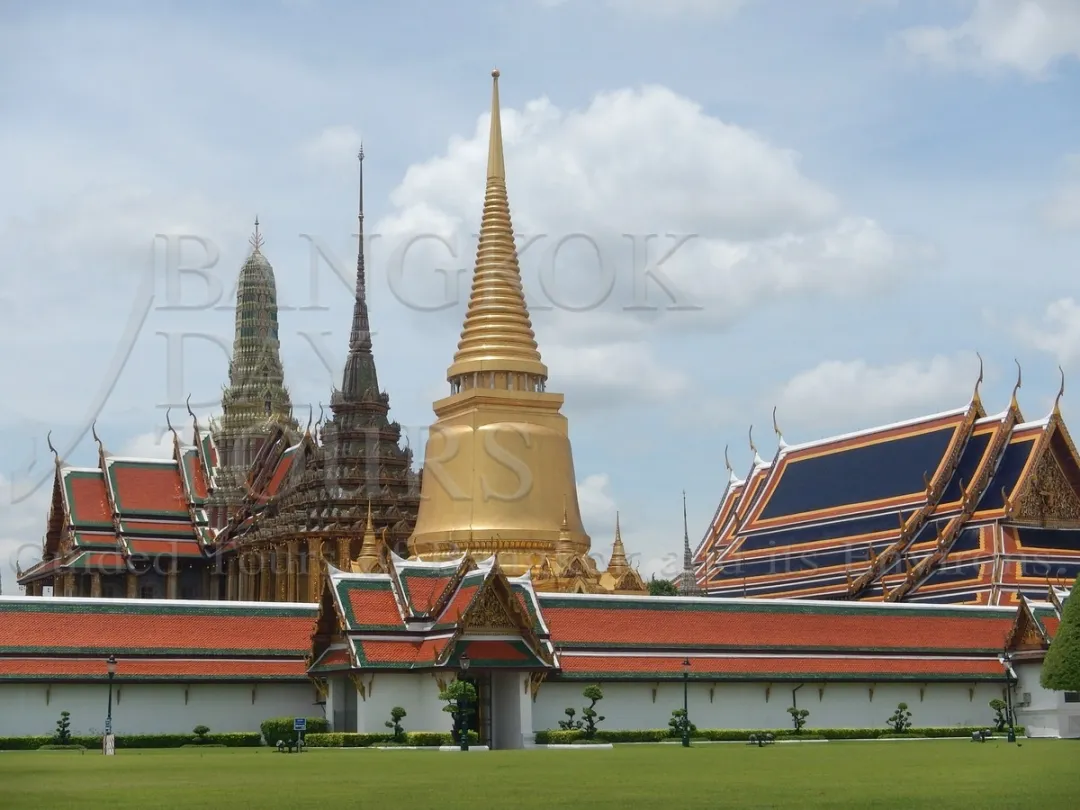
Attractions information
Ayutthaya Sacred City
Phra Nakhon Si Ayutthaya "The Sacred City of Ayutthaya" was founded in 1351 and reached its apex in the 16th century. It is an island embraced by three rivers, the Chao Phraya, Lopburi and Pa Sak.
In the Golden Age which lasted 417 years, Ayutthaya was the historic capital of Thailand.
The territory of the Kingdom of Ayutthaya extended far beyond present-day Laos, Cambodia, and Myanmar. During the 17th century, foreign visitors, traders and diplomats alike, claimed Ayutthaya to be the most illustrious and glittering city that they had ever visited. That ended forever in 1767 when it was conquered by the Burmese and completely destroyed.
Nowadays, visitors to Ayutthaya, which is only 86 kilometers north of Bangkok, can marvel at its grandeur reflected through numerous magnificent structures and ruins concentrated in and around the city island. The temple compounds are still awe-inspiring even in disrepair and a visit here is memorable and a good beginning for those drawn to the relics of history.
The architecture of Ayutthaya is a fascinating mix of Khmer, or ancient Cambodian style, and early Sukhothai style.
Most importantly, Phra Nakhon Si Ayutthaya Historical Park, an extensive historical site in the heart of Ayutthaya city, is a UNESCO World Heritage Site.
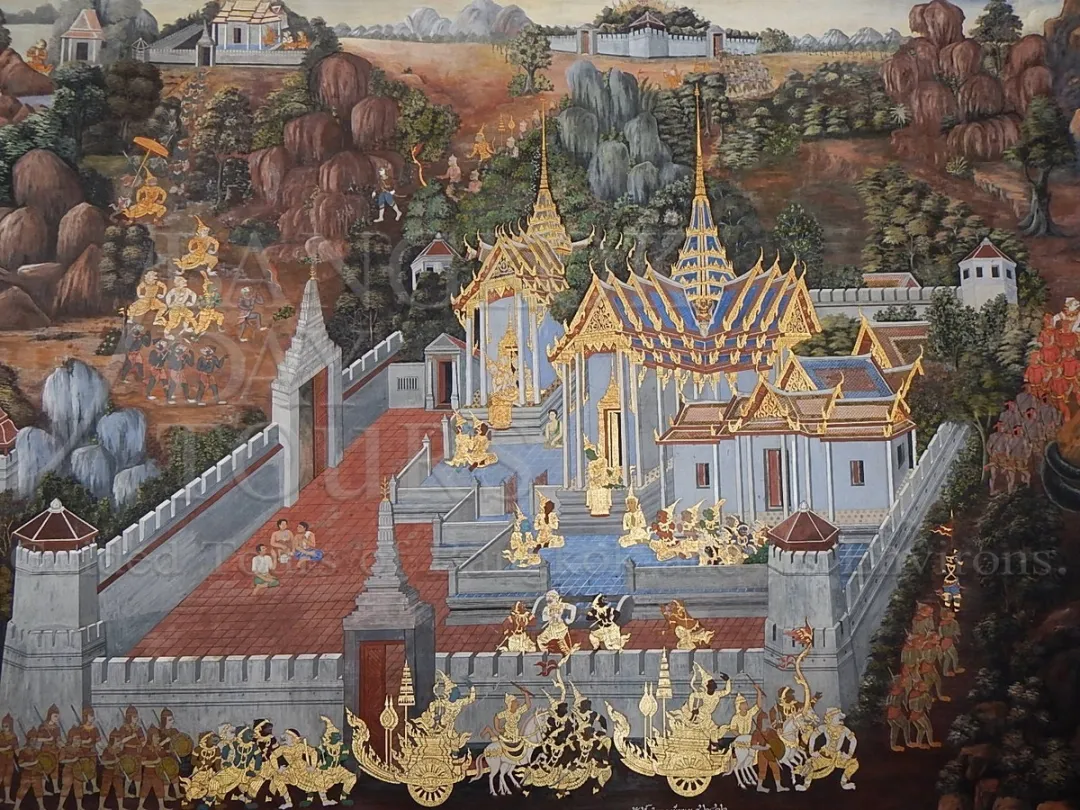
Attractions information
Grand Palace Bangkok
The Grand Palace is the most spectacular place in Bangkok, so if you only see one thing whilst in the city, this is the place to see.Thai people respectfully refer to it as Phra Borommaharatchawang. It served as the official residence of the King of Thailand from the 18th -20th century.
The Grand Palace complex, construction of which began in 1782 during the reign of King Rama I, sits on the east bank of the Chao Phraya River and is surrounded by a defensive wall 1,900 metres in length, which encloses an area of 218,400 square metres. Within its walls, in times past, were the Thai war ministry, state departments, and even the mint.
Within the palace complex are several impressive buildings including Wat Phra Kaeo or the Temple of the Emerald Buddha, which contains the revered Emerald Buddha that dates back to the 14th century.
Thai Kings stopped living in the palace in the middle of the twentieth century, but the royal residence is still used by visiting dignitaries.
Important Information
A strict dress code applies here. The Grand Palace and The Temple of the Emerald Buddha is Thailand's most sacred site. Visitors must be properly dressed before being allowed entry to the temple. Men must wear long pants and shirts with sleeves. No tank tops or singlets. Women must be similarly modestly dressed. No see-through clothes or bare shoulders. No shorts or tights. Proper shoes must be worn. No flip flops.
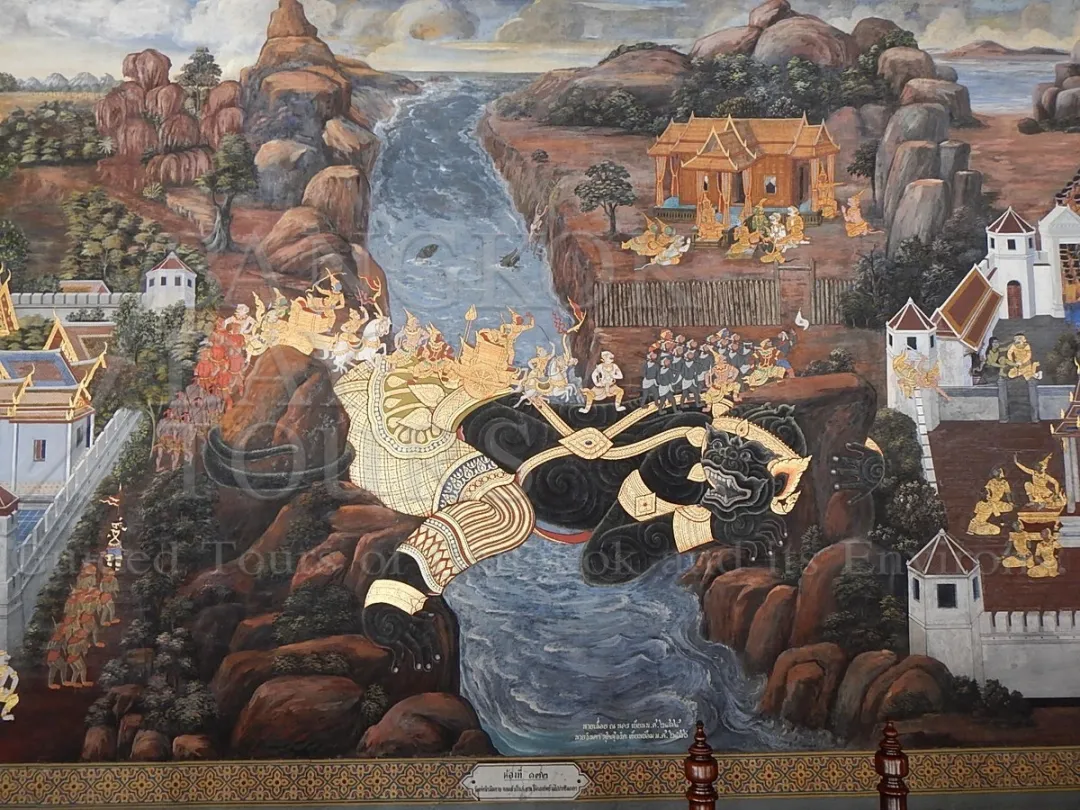
Attractions information
Chao Phraya River
The Chao Phraya River is regarded as the bloodline of the Thai people. It has its origins in four rivers flowing from the northern region of the country, the Ping, Wang, Yom and Nan which meet at Pak Nam Pho in Nakhon Sawan Province. The Chao Phraya River is 370 kilometers long.
Much of Thai history can be traced along the banks of the Chao Phraya River, because in the early days Thai people settled along the river banks and only with the advent of roads in recent times have they ventured further away.
Today the Chao Phraya River remains the most important waterway for the people of central Thailand.
It is a working river, with daily commuter boats plying up and down from Nonthaburi to Sathorn covering 31 piers along the way.
Tug boats towing three or four barges laden with sand are frequently seen as they make their way to the various construction sites down river.
In the evening, as dusk gives way to night, many dinner cruise boats take their place on the river, going up as far as the Rama VIII bridge and downstream to the Rama IX bridge.
The Chao Phraya River is vibrantly interesting in the daytime and romantically beautiful at night.

Attractions information
Bangkok Noi Canals
Bangkok has often been called the Venice of East, but over time many of the canals in the city have been filled in to make roads, so it is nice that this part of the city has retained the charm of living along the banks of serene canals. Take a long-tail boat and explore the myriad waterways.
Bangkok Noi Canal flows in a horseshoe shape through the old Bangkok Noi community in the Thonburi area.
The community was established in the Ayutthaya Period and King Chai Racha Dhiraj (1534-1546) commanded the excavation of a waterway from Bangkok Noi Canal to Bangkok Yai Canal as a shortcut to facilitate transport and communications.
Along both banks of the Bangkok Noi Canal, visitors see places of cultural and historical significance. On a boat trip you can pass the Thonburi railway station and the Royal Barges Museum. The boat trip also takes in several major temples and traditional Thai houses with carved designs.
Although cargo boats now use the direct route along the Chao Phraya River, the lively Bangkok Noi Canal community still endures. It reflects a bygone Thai lifestyle, inextricably related with waterways, and a Thai identity handed down from generation to generation.

Attractions information
Wat Pho Reclining Buddha Temple
Wat Pho, located next to the Grand Palace, is the one of the largest & oldest temples in Bangkok and is home to more than one thousand Buddha images. The most impressive of which is the huge Reclining Buddha measuring 46 metres long & 15 metres high with mother of pearl inlaid in its eyes & feet.
Wat Phra Chetuphon Vimolmangklararm Rajwaramahaviharn is commonly known as Wat Pho and the temple complex consists of two walled compounds bisected by Soi Chetuphon running east-west.
The northern walled compound is where the Reclining Buddha and famed massage school for the blind are found. If you go for a massage make sure you ask for 'soft'!
The southern walled compound, Tukgawee, is a working Buddhist monastery with monks in residence and a school.
The principal Buddha image is "Phra Buddha Deva Patimakorn" in a gesture of seated Buddha on a three tiered pedestal called Phra Pang Smardhi (Lord Buddha in the posture of concentration), and some ashes of King Rama I are kept under the pedestal.
Made as part of Rama III's restoration, the Reclining Buddha is decorated with gold plating on his body and mother of pearl on his eyes and the soles of his feet. Each foot is 3 metres high & 5 metres long and displays 108 auspicious signs portraying natural scenes of both Indian and Chinese influences.
Pre:Post Cruise Three-Day Kanchanaburi Ayutthaya Bangkok (Code:KT3100)
Pick a day and people
THB 29,900.00
THB 33,900.00
THB 47,900.00
THB 57,900.00
THB 69,900.00
THB 81,900.00
THB 93,900.00
THB 105,900.00
THB 117,900.00
THB 127,800.00
THB 151,800.00
THB 163,800.00
This tour is exclusive to Klong Toey Port Cruise Ship Passengers. There are also exclusive tours
Kanchanaburi is where you'll find the famous Bridge over River Kwai and also the Buddhist monastery known as the Tiger Temple. Ayutthaya is a UNESCO World Heritage Site and was the capital of Siam for 416 years. Bangkok is home to magnificent sights like Wat Phra Kaeo, the Grand Palace and Wat Arun.
Do you want your tailor-made tour?
A tailor-made tour is the best kind of independent travel itinerary, designed and arranged just for you and your needs.
All events and activities are part of your very personal, privately guided tour.
Just ask us and we will be happy to make your tour an unforgettable experience. We have been doing this for 25 years and the quality of tailor made tours has never changed.
Why is a private tour a better choice?
With a private tour, you have the freedom to choose what you want to do and when you want to do it. There is much more room for flexibility and changes to your itinerary at every step of the way because you don't have to consider the needs of other travelers. The flexibility and freedom to make the most of your time is the reason why so many people choose to take a private tour rather than a group tour.Tour Programme
07:00 - Day 1 Departs
07:00 - Pick up from your hotel
We'll pick you up from your hotel. Please wait in the lobby.Read More >
08:30 - Floating Market Damnoen Saduak
You can take the boat on the canal through the floating market. Please keep your hands inside the boat as there are many boats and we don't want you to jam your fingers.Read More >
11:30 - Bridge over the River Kwai
First stop in Kanchanaburi will be at the bridge. You'll have time to walk on the bridge and take some photos.Read More >
12:30 - Lunch in a Thai Restaurant
Lunch will be served in a local Thai restaurant.Read More >
13:00 - Tiger Temple Wat Pha Luang
We'll get you to the Tiger Temple nice and early so you'll have maximum time there. When you've seen enough just tell the guide and you can head for your hotel in Kanchanaburi. Read More >
16:30 - Check-in to your Resort Hotel
Time for a shower and a cold beer or nice refreshing Gin & Tonic. Relax in the comfortable surroundings.
18:30 - Dinner on Floating Restaurant
An enjoyable Thai dinner will be served at the floating restaurant beside the Bridge over the River Kwai. Please pay for your own drinks.
08:00 - Day 2 Departs
08:00 - Check-out from Resort Hotel
After breakfast we'll check-out and drive through to the ancient capital city of Ayutthaya.
10:30 - Ayutthaya Temple Wat Mahathat
First stop will be at Wat Mahathat which is probably the best example of the ancient kingdom's glory. Read More >
12:00 - Lunch in Thai Restaurant
Lunch will be served in a local Thai restaurant.
13:00 - Ancient Temples
Most of the afternoon will be spend visiting some other ancient temples, including Wat Lokayasutharam, each one having its own unique characteristics.Read More >
15:30 - Depart for Bangkok
Relax in the air conditioned comfort as your driver returns you to Bangkok.
17:30 - Arrive at your Bangkok Hotel
You can expect to be back at your hotel around 5:30pm. Accommodation and dinner in Bangkok is not included in the tour price.
08:00 - Day 3 Departs
08:00 - Pick up from your Hotel
We'll pick you up from your hotel. Please wait in the lobby.
09:30 - Grand Palace Wat Phra Kaeo
The Grand Palace incorporates Wat Phra Kaeo or the Temple of the Emerald Buddha which is Thailand's most revered temple. Please dress accordingly.Read More >
12:00 - Lunch in Thai Restaurant
Lunch will be in a Thai restaurant beside the Chao Phraya River. Read More >
13:00 - Long-tail Boat Trip
Enjoy the long-tail boat trip on the river and into the canal system on the Thonburi side. You can choose one stop: Wat Arun or the Royal Barge Museum or Taling Chan Floating Market, which is only open on Saturday and Sunday.Read More >
15:00 - Wat Pho Reclining Buddha
Wat Pho is considered Thailand's first university and houses the famous Reclining Buddha.Read More >
16:00 - Return to your Hotel
Drop off back at your hotel or elsewhere if you want to go shopping.
Important Information
A strict dress code applies at The Grand Palace. Men must wear long pants and shirts with sleeves. No tank tops or singlets. Women must be similarly modestly dressed. No see-through clothes or bare shoulders. No shorts or tights. Proper shoes must be worn. No flip flops.
At the Tiger Temple women must cover their shoulders and knees. Tank tops, short skirts, shorts, shawls and scarves are not permitted. Tights cannot be worn as an outer garment. Bright colours such as red, orange, and pink are not allowed.





